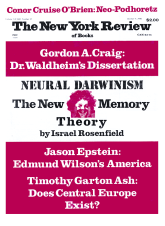The film assumes the texture of its screen
on the first projection. Audrey Hepburn’s face
creases where the rec room paneling once
took exception to it for the sake of
rephrasing it slightly—a lesson
these late viewings have brought home. Homescreen or revival house, the print of her
quixotic photographer Fred Astaire
pulls from the fixative always
already bears the mark of my mother’s
casual fault. He saw her as eyes and mouth.
Typically, she had her face buried
in a book the day he discovered it.In the end she learns to renounce
a half-baked philosophy and to love
bearing the standard of the New Look.
Still, I can’t detach her from the scene
of her earliest associations,
the philosophy section where she dreamed
of a possible love. Is that what she meansby “empathicalism”? Imagining
we can bypass the film that divides us
from former selves as from each other
by a poorly marked private detour
stumbled on, repeatedly, in the dark?
“How long has this been going on?” she sings,
her timbre unfixed in spite of lessons.
This Issue
October 9, 1986



